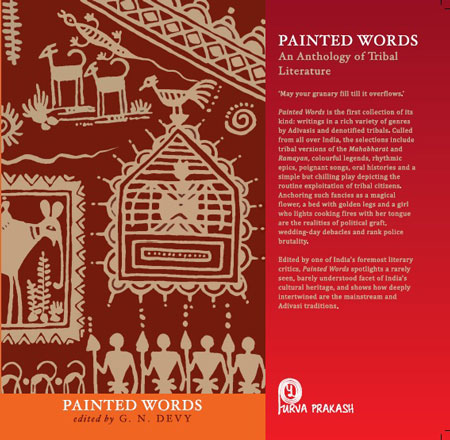
Learn more about Baba Amte and the Narmada valley on Safe search >>
VADODARA: Much is known about how the Harappan Civilization flourished on the banks of the Indus almost 5,000 years back. But now is the time to move ‘ahead’ of the Indus Valley Civilization.
Through the largest exploration exercise ever undertaken, M S University’s Department of Archaeology and Ancient History along with United States’ Stone Age Institute will unearth evidence of our own ancestors.
“Study at Narmada Basin is important because of its geographical location which is very strategic for migration of animal population from North to South and East to West. It is not only rich in fossils and archaeological sites, but it has a long history of human occupation and this region is facing submergence due to dam construction,” says Chauhan.
“Through the project we are trying to know whether the human evolution in Narmada Valley was the same as other regions – Africa, China or Europe or whether the origin of African and European stone age cultures was the Narmada Valley,” he says. […]
Source: “Was Narmada valley the centre of human evolution?” by Prashant Rupera (Times of India, 14 August 2012)
Address : https://timesofindia.indiatimes.com/city/vadodara/Was-Narmada-valley-the-centre-of-human-evolution/articleshow/15485975.cms
Date visited: 5 September 2020
Photo and video recommendation: a voice from rural India worth being heard
Whether you plan a visit or seek to learn more about India’s rural life – perhaps inspired by the Gandhian social movement or Rabindranath Tagore – explore “a living journal, a breathing archive” in the Adivasi category of PARI: the People’s Archive of Rural India initiated by distinguished photo journalist-turned-activist P. Sainath, continually enriched by stories from all over India.
“In less than 200 years, photography has gone from an expensive, complex process to an ordinary part of everyday life. From selfies to satellites, most of the technology we use and spaces we inhabit rely on cameras. […] While photographic documentation can aid in shaping history, it can also be a window into the horrors of the past.” – Read more or listen to Butterfly Effect 9 – The Camera on CBC Radio Spark 26 May 2023 >>
[O]ver the last three decades, successive governments in the state have pushed the Narmada dam as a lifeline for the drought-prone areas of Kachchh, Saurashtra and North Gujarat. In practice, however, these regions are given the lowest priority. They receive only the residual water after the requirements of urban areas, industries, and farmers in central Gujarat are met. […] The programmes of well-charging and check dams adopted in the past must be revived. | Learn more about this and related issues on People’s Archive of Rural India initiated by distinguished photo journalist-turned-activist P. Sainath >>
Source: Namita Waikar quoting Himanshu Thakkar of the South Asia Network on Dams, Rivers and People (2018 report titled “Gujarat’s water crisis rooted in years of misplaced priorities”) in “Counting sheep as grasslands shrink in Gujarat”
URL: https://ruralindiaonline.org/articles/counting-sheep-as-grasslands-shrink-in-gujarat/
Date visited: 5 September 2020
Dams, irrigation and factory farms are linked to 25% of infectious diseases in humans. Travel, transport and food supply chains have erased borders and distances. Climate change has contributed to the spread of pathogens. […] The science is clear that if we keep exploiting wildlife and destroying our ecosystems, then we can expect to see a steady stream of [zoonotic] diseases jumping from animals to humans in the years ahead. […] To prevent future outbreaks, we must become much more deliberate about protecting our natural environment.
Source: Inger Andersen, Under-secretary general and executive director of the UN Environment Programme quoted in “Coronavirus: Fear over rise in animal-to-human diseases” (BBC News, 6 July 2020)
URL: https://www.bbc.com/news/health-53314432
Date visited: 27 November 2020
Tips for using interactive maps
Toggle to normal view (from reader view) should the interactive map not be displayed by your tablet, smartphone or pc browser
For details and hyperlinks click on the rectangular button (left on the map’s header)
Scroll and click on one of the markers for information of special interest
Explore India’s tribal cultural heritage with the help of another interactive map >>
See also
Adverse inclusion | Casteism | Rural poverty
Demographic Status of Scheduled Tribe Population of India (Census figures 2011)
Fact checking | Figures, census and other statistics
Human Rights Commission (posts) | www.nhrc.nic.in (Government of India)
Search tips | Names of tribal communities, regions and states of India
“What is the Forest Rights Act about?” – Campaign for Survival and Dignity
“Who are Scheduled Tribes?” – Government of India (National Commission for Scheduled Tribes, NCST)

Tribal Literature by G.N. Devy >>
Free eBooks & Magazine: Adivasi literature and languages >>
“India, a union of states, is a Sovereign, Secular, Democratic Republic with a Parliamentary system of Government. The President is the constitutional head of Executive of the Union. In the states, the Governor, as the representative of the President, is the head of Executive. The system of government in states closely resembles that of the Union. There are 28 states and 8 Union territories in the country. Union Territories are administered by the President through an Administrator appointed by him/her. From the largest to the smallest, each State/UT of India has a unique demography, history and culture, dress, festivals, language etc. This section introduces you to the various States/UTs in the Country and urges you to explore their magnificent uniqueness…” – KnowIndia (Government), States and Union Territories (Visited: 2 September 2023)
Learn more about India’s 28 States and 8 Union Territories – From Andhra Pradesh to West Bengal | Nutrition >>
See also
Forest Rights Act (FRA) | Legal rights over forest land
Health and nutrition | Recommendations by the Expert Committee
People’s Archive of Rural India (PARI) | RuralIndiaOnline.org
States along the Narmada river’s course (source to Arabian Sea):
Madhya Pradesh | Maharashtra | Gujarat